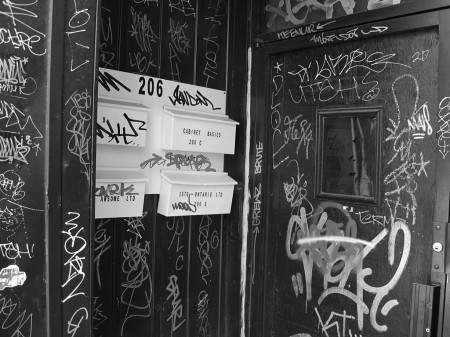Carbon dioxide isn’t the only human-generated gas about which we ought to be concerned. As this article highlights, the environmental consequences of nitrogen are also significant:
The release of reactive nitrogen into the environment has a “cascade” effect, according to two papers published in the latest issue of Science. James Galloway of the University of Virginia, the lead author of one of the papers, says that every single atom of reactive nitrogen can cause a cascading sequence of events which can harm human health and ecosystems.
In the lower atmosphere the oxides of nitrogen add to an increase in ozone and small particles, which can cause respiratory ailments. The reactive nitrogen in acid rain kills insects and fish in rivers and lakes. And when it is carried to the coast it contributes to the formation of dead zones and in the creation of red tides (a kind of toxic, algal bloom that can form in the sea). It is then converted to nitrous oxide which adds to global warming.
Marine dead zones and air pollution are threats at a lesser scale than those posed by climate change, but this is nonetheless further evidence of humanity’s ability to alter chemistry on a global scale.


Milan- interested in your reaction to this article about ‘eco-hacking’:
http://www.guardian.co.uk/technology/2008/may/29/greentech.geoengineering
Claire
Claire,
I think geoengineering is a crazy option given (a) how little we understand the magnitude of feedbacks in the climate system and (b) how likely unwanted consequences are. That being said, geoengineering is theoretically possible and could prove to be the most desirable option in a situation where accelerating runaway climate change has begun.
Notably, geoengineering options that leave increased levels of CO2 in the atmosphere will not address the problem of oceanic acidification.
My previous posts about geoengineering
“Reactive Nitrogen” as you call it, or as it has been called by the automobile industry since the 70s, Nitric Oxides (NOx), are a real problem. However, the tone of your entry is confusing since they are a problem we have been accutely aware of since California took action against smog in the 70s. NOx’s are produced in high temperature combustion under high pressure, which is unfortunately the most efficient way to burn gasoline. Thus, both performance and fuel economy fell when nitric oxide levels were radically reduced in 1972. However, after the invention of the catalytic converter (which utilizes platinum), problems of NOx in car emmisions have become largely a thing of the past – and even in the mid 80s cars with compression ratios as high as 12 to 1 were back on the road passing the new standards.
So, in short, yes we should be concerned about nitric oxides, however, since we already are concerned about them and they are closely regulated, I don’t see why we need to be any more worried about them as we already are.
That said, I have no idea whether super tankers or container ships produce much NOx, but I would doubt it because they burn such a low grade fuel. I do know that at least in BC there is very tight regulation where waste wood is being burned – the temperature must remain within a strict window which maximizes combustion but minimizes N0x emissions. My father wrote some software for a mill which included not only control over the stack temperature but also automatic mailing of the data to the province when the temperature left the green zone so that the mill could be fined the requisite amount for emissions malcontrol.
Wherever I wrote “Nitric oxide” in the last post, please read in “nitriceoxide”, which is a common use but not technically appropriate term for NOx.
I can’t spell. “Nitrous oxide”.
Tristan,
I think the main anthropogenic source of nitrogen is fertilizer runoff from farms – a consideration that is quite relevant in an era where biofuels are being used increasingly intensely as alternative fuels.
“Hundreds of the world’s coastal regions have dead zones. They mostly occur when spring rainfall gathers on land, makes its way into streams and rivers, and eventually tumbles down to the ocean. The rivers carry with them a cargo of nutrients, in particular nitrogen, from farms in the watershed. When this nitrogen reaches the sea it causes a brief frenzy of algal growth which depletes the water of oxygen. Fish, clams, shrimp, crabs, entire mussel reefs and other bottom-dwelling animals can be wiped out.
Jane Lubchenco, a marine ecologist from Oregon State University, says this nutrient run-off from land is increasing the number, size, duration and severity of the dead zones. This is mainly because the use of fertilisers in agriculture is increasing. Sometimes the waste from animals or human sewage worsens the blight.”
Water seems to be the main vehicle here, not air.
Nitrous Oxide (N2O) is also a greenhouse gas that human activity is releasing into the atmosphere. This is largely a result of the use synthetic nitrogen fertilizers.